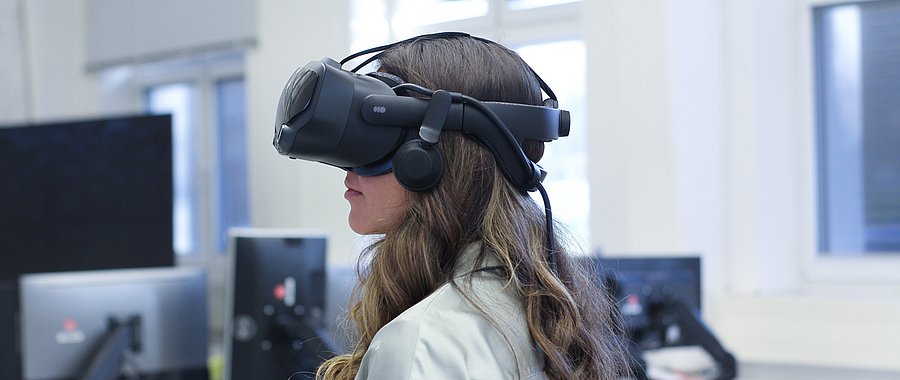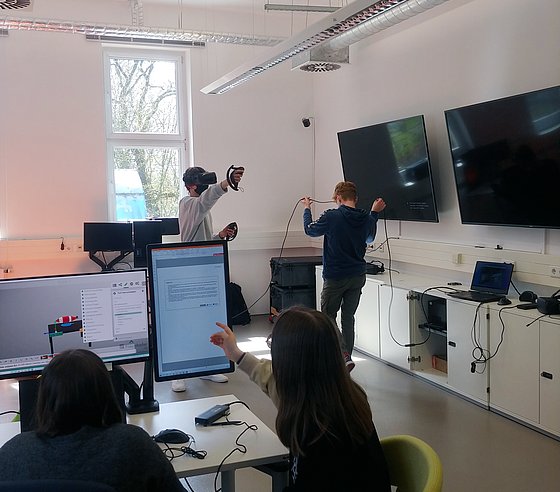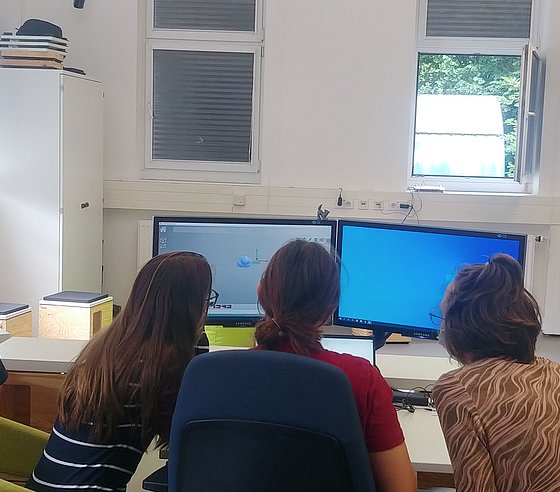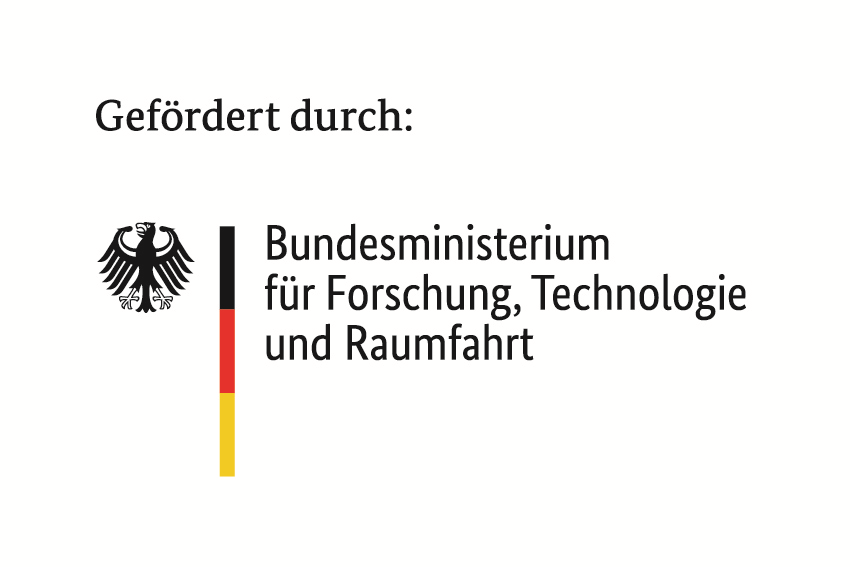KoLBi-BK

VR deployment within the KoLBi-BK project.

Coherence in Teacher Education - Quantitative and Qualitative Profiling of the Industrial-Technical Teaching Profession at Vocational Colleges: Designing Industrial-Technical Teaching with Virtual Reality.
VR enables the visualization of abstract phenomena such as magnetic fields or the integration of expensive, technically complex large-scale equipment and machines. This cost-effective integration of technology that is not available in schools is particularly important for commercial and technical education. Furthermore, unlike other digital media, VR impresses with its realism and natural interaction. This enables the acquisition of practical work experience in commercial and technical education at vocational colleges without the risk of user injury or limited functionality of the technology due to incorrect operation. Studies on VR applications in industrial contexts also show that such applications have a positive effect on the learning of work processes.
To date, there are few empirically proven concepts for integrating VR into teaching and learning processes, and there are gaps in research and knowledge regarding content design. However, it is known that low usability and high demands hinder the learning process. Another key challenge is the creation of content by subject matter experts (e.g., teachers) with little technical affinity, who often invest time and human resources in technical development rather than content creation. The reason for this is the frequent use of proprietary authoring tools, which teachers usually do not have access to. These problems must be addressed in order for VR to be successfully integrated into the classroom.
At the University of Wuppertal, VR authoring tools have been and continue to be developed in various research projects to support the creation of learning and teaching content by users with little technical affinity.
As part of the KoLBi-BK subproject, aids were developed to enable students of commercial and technical teaching to try out, learn, and practice using a VR authoring system. In addition, various teaching concepts incorporating VR were designed and tested at partner schools in order to reduce the existing research gap in this area. Finally, an interface was created between a planning tool developed in another subproject and the VR authoring tool in order to show users of the planning tool the potential for using VR in the classroom and to enable the integration of VR-based learning environments into it.

Creating a VR environment.

Students learn how to use the VR environment.

